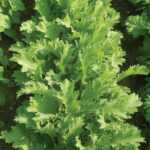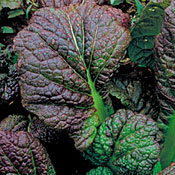Our first English newsletter is a cause for celebration–and a mark of maturity. It means we are sufficiently fluent in our “mother tongue,” which is Hebrew, as well as “farm language” – the language of vegetables, weeds, insects, earth microbes, raindrops, sunshine, and most of all- the language of the earth. After five and a half years of writing in Hebrew (our first Chubeza newsletter debuted in April 2004, with our first box of vegetables) here we are, ready to publish in an additional language. For me, personally, it signifies a sort of closure. My entrance to the world of organic farming came when I worked and farmed in California. My language of discovery and practice was English, and when I returned to Israel I struggled to translate the nomenclature to Hebrew. The English newsletter would have never happened without Melanie and Aliza’s persistence (they’re editing and translating the newsletter), and before we even start, I would like to thank them in advance for sleepless nights in the race to translate each Monday’s newsletter in time… Some of you have been breaking your teeth over the years reading our newsletters in Hebrew, but for others, this is a first introduction to our weekly message. For that reason, we’re adding a bit more background information about Chubeza and about us. The first newsletters will feature a brief look at our piece of land, the people who work it and the ideals behind “Chubeza.”
It all starts in the land
I first laid eyes on our field October 2003. The thorns were man-high, but in my passionate, blind love, I knew this was a sign of fertile land and great promise. The field was surrounded by a tree nursery that added greenery and some shade, and to the north were the hills of the Ayalon Valley, its fields and houses.
Our field now numbers some 12.5 acres and is located in the fields of Kfar Bin Nun, on the Latrun-Ramle road in the Ayalon Valley. After six years in our first field, where the entire valley lay before our eyes, we changed our location to various plots within the Moshav– close to our modest packing house, peeking mischievously from between the houses, adding grace, beauty, and an old-fashioned aura to the modern Moshav. Another plot, still young, is outside the Moshav; behind it is a natural grove which makes the view of the Nesher Factory in the distance a little more tolerable…
Some of the plots have been organic for the past two years, and another for only one year. It has undergone detox and is now taking its first steps in the chemical-free world as it transforms to being organic.
After last year’s winter, we’ve started this one with a sigh of relief (bli ayin hara). The timely, gentle rains gracing our fields every few days are ultimately manifested in the quantities of mud in your vegetable box. Such is characteristic of this time of year, when hearty showers have already saturated the layers of land (may they continue till springtime!). This is typical specifically of our heavy earth, the Terra Rossa of the coastal plain of Judea– red, clay-like dirt that is rich in iron oxides. This type of earth is common in the hilly areas of limestone and dolomite. It contains a high volume of clay created by the erosion of these rocks, arriving here after being washed down from the hills and reaching the valley. The red soil, from which actual clay is made, is the thinnest soil entity (made from particles smaller than 0.004 millimeters). Just like when you wet clay, you get mud, when this soil gets wet it absorbs the water, drains slowly and becomes very muddy. Which is why it leaves a residue of mud on the vegetables. The advantage of the mud is that the Terra Rossa clay is also very rich and fertile earth: it absorbs various minerals, iron and potassium oxides and even nitrogen, which is why it can be found in nature in various colors. Once it dries (rather slowly), it shrinks and naturally crumbles into small clumps, allowing roots, water and air to penetrate. This is why clay is an ideal environment for growing almost all types of plants. It is porous, ventilated and hydro absorbent.
The earth of the Ayalon Valley is indeed fertile and high-quality. As Gabi, a veteran farmer, neighbor and close friend, says, “We have all the weeds in the world, plus a few more that are just ours alone…” Weeding is indeed one of our more common tasks, especially during wintertime–even more so, in a wet winter like this one, and specifically in new organic fields like the one we are now cultivating. As you will notice, root vegetables are an inseparable part of life at Chubeza (a major reason we named the farm after one of our favorite and most common edible weeds in the field, and in your boxes, every winter and spring).
We will now have some time for weeding, as we are entering a short recess in planting. Last week we completed our final planting and seeding for this period, and now, over the next month and a half, we will only be planting a new crop of lettuce and scallions. The rest of the vegetables will wait patiently while the Class of Pre-Winter will grow. In February we start planting anew.
Winter is a lovely time here at Chubeza. As Moshe Stavi (Stavsky), a chalutz, farmer and Hebrew writer beautifully describes Israeli winter, “The first rain brings relief to man, livestock and flora, and the heart sings in joy, anticipating the new life… here the word ‘winter’ symbolizes revival, invigoration and youth.” It is true–Our farm gladdens the heart this time of the year: plants decorate everything in dozens of shades of green, the brown earth is soft and saturated, and the air is full of movement and the buzz of life. Rainy days warm the heart, after-the-rain days are clean and beautiful and clear, and it feels good to warm up in the winter sun. Even hazy days, like the ones we had last week, are sweet because we know they precede rain.
Come visit us– we would love to host you in our winter. And we welcome your feedback to this newsletter!
Alon, Bat Ami and the Chubeza Staff
________________________
This week’s basket includes:
Monday: lettuce, carrots, spinach, cauliflower, dill/parsley, tomatoes, broccoli, fennel, arugula, clemetines, cucumbers, small box only-red beets
In the large box, in addition: small radishes, mustard greens, kohlrabi, turnips.
Wednesday: cucumbers, mustard greens/kale, cilantro/parsley, tomatoes, lettuce, red beets, broccoli, kohlrabi, cauliflower/cabbage, carrots, snow/green peas-small box only.
In the large box, in addition: small radishes, turnips, leek, celery
_______________________
Each week we will aim to focus on one of the vegetables in your box (specifically the more unusual ones). In this first newsletter, we shall discuss the green leafy vegetables.
Wintertime brings many greens to your box: lettuce, garden rocket, chard, green and purple mustard greens, kale, spinach, tat soi and winter herbs (parsley, coriander, dill). What’s so nice about the greens is that they do not succumb to cultural sophistication and human technology (some say “not yet,” but I hope it’s for good): they’re absolutely seasonal and at their best during winter and fall. In the Israeli summer, most suffer terribly and require a lot of protection and spraying to guard them from pests and other woes. They also cannot be stored for long–they wither and dry up and spoil and play all sorts of tricks to indicate that their time is up and they must be eaten in season and fresh. How nice!
For those who are confused by the variety and quantity of greens in the box, let’s begin with an introduction:
Red leaf lettuce:
Romaine lettuce:
Tat soi:
Arugula
Swiss chard
Green beet leaves
Flat mustard greens
Curled mustard greens
Purple mustard greens
Spinach
Kale
And now that we’ve met— some words of praise: the leafy vegetables are rich in vitamins, minerals and phytochemicals, those elements that allow the plant to protect itself from solar radiation, diseases and contamination, and from harmful oxidization. They perform similar services for humans as well. Leafy vegetables are rich in lutein—an antioxidant from the carotenoid family, vital for optic health and an aid to cardiac and vascular health–as well as a cancer preventative. The dark, leafy greens are also rich in vitamin K, potassium, folic acid, calcium and magnesium. And what’s good is that these leaves succeed in doing the work much better than any food supplement. The timing and perfect arrangement of the dance each leafy vegetable shares create betters health—fortifying bones, heart and vascular system, muscles, the nervous system, balancing sugars in the body—for the human body as a whole.
Leafy vegetables belong to different families: spinach and the root vegetables beet and chard belong to the chenopodiaceous family; rocket, mustard greens of all types, kale and tat soi belong to the brassicaceac (cruciferae) family; lettuces represent the complex. Their tastes run the gamut—rocket and mustards are pungent, chard and lettuce leaves are sweetish, and the kale and spinach are somewhat bitter. Except for lettuce, where each head is detached from its base, we pick them all in a way that enables regrowth: from chard, kale, tot soi, mustard greens and spinach, we remove the large, older leaves from the plant’s circumference, leaving the young center to sprout. We cut the rocket, similar to herbs, and leave several centimeters from the stalk from which the plants grow anew.
It is highly advisable to consume the greens quickly: their nutritional value is highest when they are fresh. To keep them crisp and fresh after a few days or even a week or more—wrap them in a cloth or paper towel; then seal this well in a plastic bag. Keep the package in the colder, lower sections of the refrigerator. Our members have recommended keeping one sample leaf outside the towel to help identify the desired green from amongst the mummified wrappings on the refrigerator shelf….
The most well-known use for greens is in fresh salads—almost all, even the kale, will add taste and zest to a salad. The stiffer leaves can be sliced thin, but don’t give up on them! Greens can also be cooked—stir-fry them with other vegetables (add during the last few minutes of frying), blend them into quiches (use the more sharp-tasting greens cautiously), prepare warm salads or add them to pasta. Several more interesting uses are to dry the leaves to create crispy chips or to drain and blend them with sweet fruits and vegetables to create a delicious green beverage.
Recipes:
Gingery Sauteed Tat Soi with Tofu Steaks
Mustard greens with onions and more thoughts recipes











